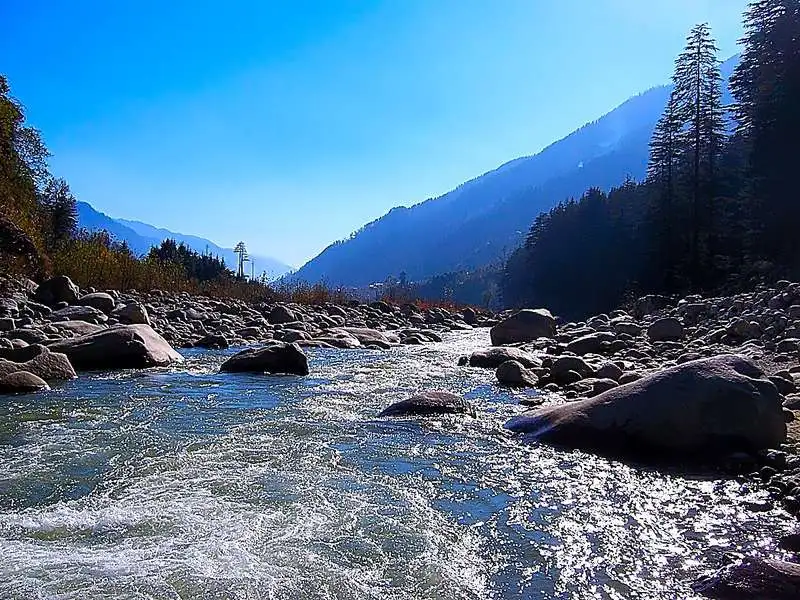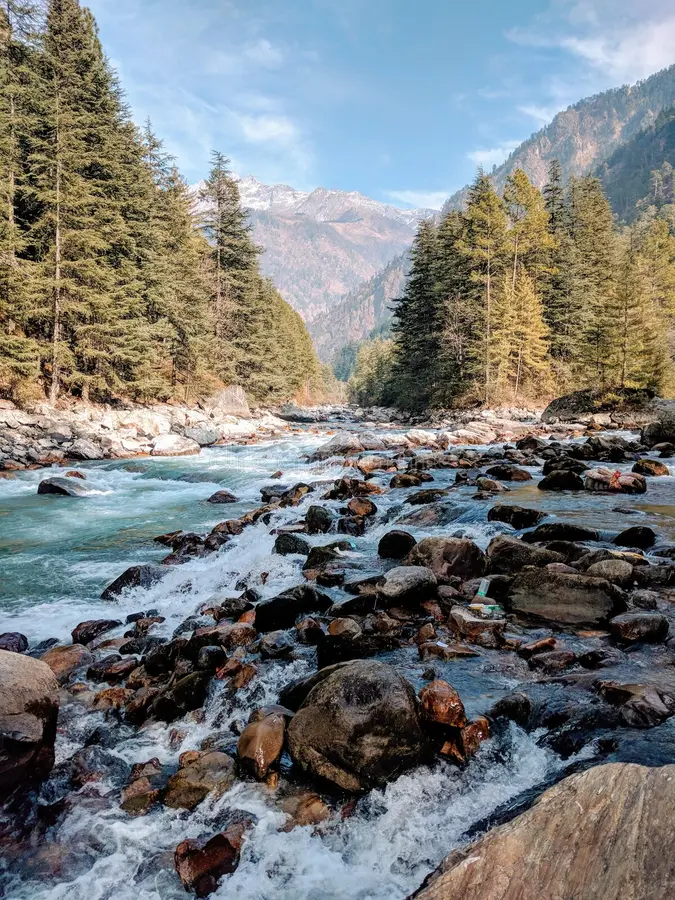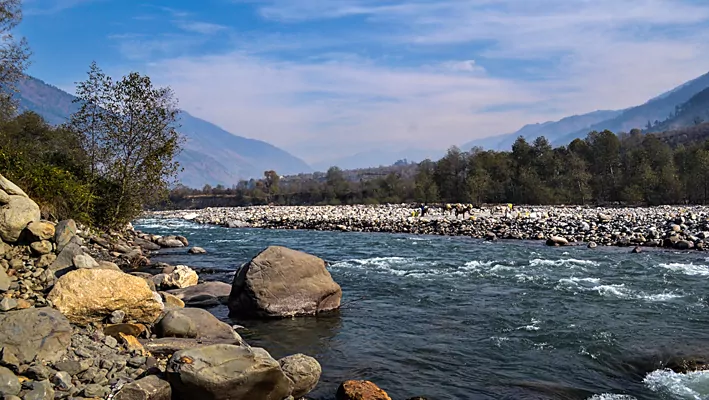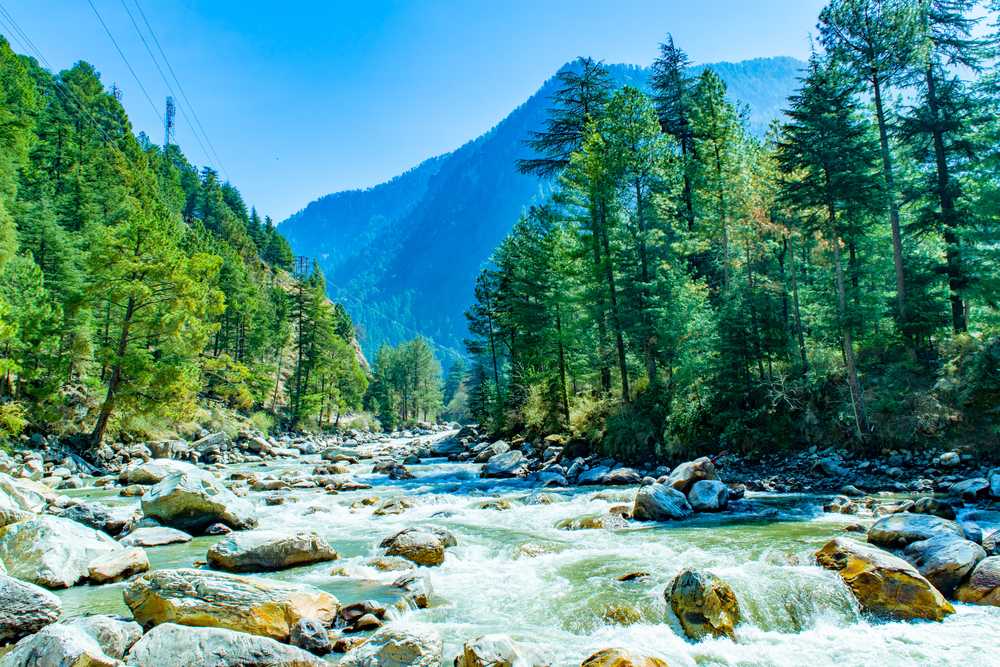Himachal Pradesh, often referred to as Devbhoomi or “Land of the Gods,” is a paradise blessed with majestic mountains, verdant valleys, and serene rivers. These rivers, originating from the Himalayas, not only enrich the region’s natural beauty but also sustain life, culture, and spirituality. Let’s explore some of the most famous rivers of Himachal Pradesh that make it a haven for nature lovers and adventurers alike.
1. Beas River: The Lifeline of Himachal
The Beas River is one of the most prominent rivers in Himachal Pradesh, flowing through the heart of the state. Originating from the icy slopes of the Rohtang Pass in the Pir Panjal range, it meanders through Kullu, Mandi, and Kangra districts before merging with the Sutlej in Punjab.
- Significance: Known for its mythological connection to the sage Veda Vyasa, who is said to have composed the Mahabharata on its banks.
- Tourist Highlights: The Beas River is a hub for rafting in Kullu and offers breathtaking views in Manali.

2. Sutlej River: The Ancient Stream
The Sutlej, the longest river in Himachal Pradesh, has its origins in Tibet near Lake Rakshastal. Flowing through the Spiti Valley, Kinnaur, and Shimla districts, it plays a crucial role in the region’s hydropower projects.
- Significance: It is one of the five rivers mentioned in the ancient texts of the Rigveda and is central to the Indus Valley Civilization.
- Tourist Highlights: The majestic Sutlej is visible from several vantage points, including the scenic village of Sangla in Kinnaur.

3. Ravi River: A Cultural Emblem
Originating from the Bara Banghal in Kangra, the Ravi River flows through Chamba district before entering Punjab. Often called the “River of the Moon,” it is celebrated for its pristine beauty.
- Significance: It has immense importance in the history of Chamba and has been a lifeline for its people for centuries.
- Tourist Highlights: The tranquil landscapes of Chamba town are complemented by the Ravi River’s serene flow.

4. Chenab River: The Mighty Flow
The Chenab River, locally known as Chandrabhaga, is formed by the confluence of the Chandra and Bhaga rivers in Lahaul-Spiti. Its gushing waters and deep gorges make it a spectacular sight.
- Significance: It holds a spiritual connection for locals and is surrounded by folklore and legends.
- Tourist Highlights: The rugged beauty of the Chenab can be best experienced in Lahaul, with its dramatic valleys and snow-capped peaks.

5. Parvati River: The Mystic Beauty
A tributary of the Beas, the Parvati River originates in the Pin Parvati Pass and flows through the famous Parvati Valley. This river is particularly popular among trekkers and nature enthusiasts.
- Significance: Known for its tranquil energy, it has become a favorite destination for those seeking spiritual rejuvenation.
- Tourist Highlights: Kasol and Manikaran, located along its banks, are famed for their scenic beauty and hot springs.

6. Spiti River: The Desert Stream
The Spiti River flows through the cold desert of the Spiti Valley, carving through the arid terrain and feeding the sparse vegetation of the region. It originates from the Kunzum Pass and joins the Sutlej in Kinnaur.
- Significance: It sustains life in one of the harshest terrains of the state.
- Tourist Highlights: The river offers stunning views near Tabo and Kaza, making it a must-visit for adventure seekers.
The Role of Rivers in Himachal’s Culture and Economy
Rivers in Himachal Pradesh are more than natural watercourses; they are the lifeblood of the state. They support agriculture, serve as a source of hydroelectric power, and attract countless tourists every year. Many festivals and rituals are centered around these rivers, reflecting their spiritual significance.
Conclusion
The rivers of Himachal Pradesh not only sculpt the breathtaking landscapes but also nurture the lives of those who call this land home. From the roaring Chenab to the tranquil Parvati, each river has its own story and significance. Whether you’re an adventurer, a spiritual seeker, or a nature enthusiast, the rivers of Himachal Pradesh invite you to experience their timeless charm.
Let these rivers guide you on a journey through the mystical heart of the Himalayas.
